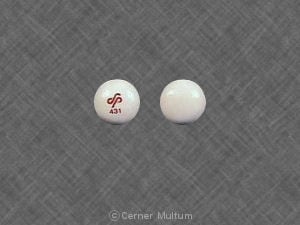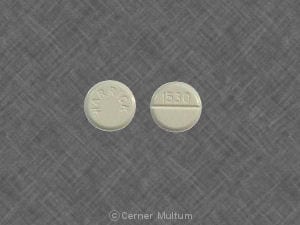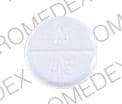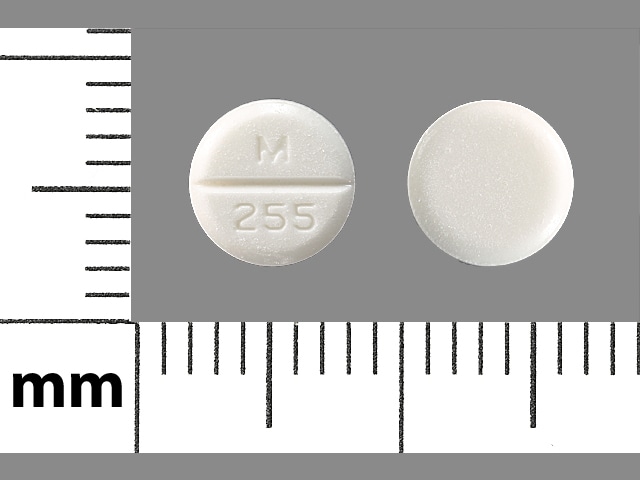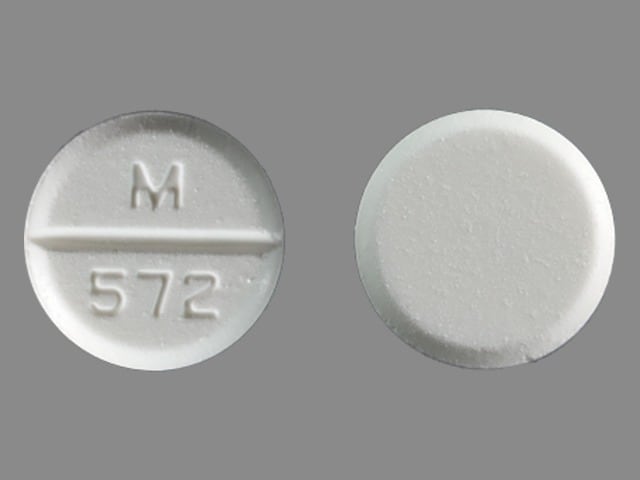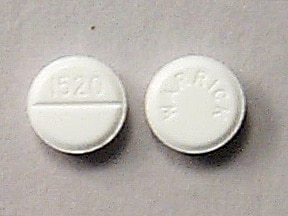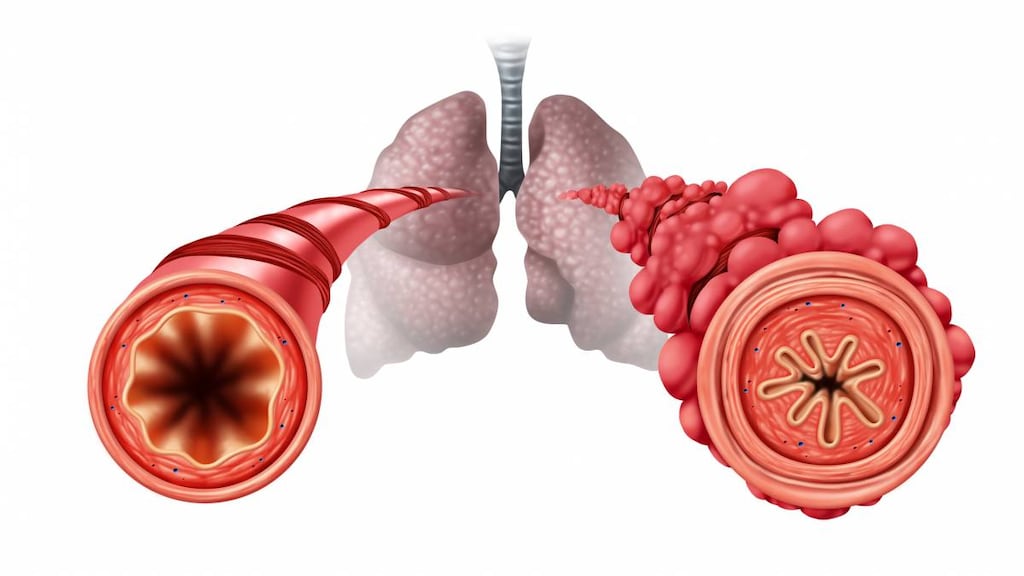Dosage Forms
Excipient information presented when available (limited, particularly for generics); consult specific product labeling. [DSC] = Discontinued product
Aerosol Powder Breath Activated, Inhalation:
ProAir Digihaler: 108 mcg/actuation (1 ea) [contains lactose monohydrate]
ProAir RespiClick: 90 mcg/actuation (1 ea) [contains milk protein]
Aerosol Solution, Inhalation:
ProAir HFA: 90 mcg/actuation (8.5 g)
Proventil HFA: 90 mcg/actuation (6.7 g)
Ventolin HFA: 90 mcg/actuation (8 g, 18 g)
Generic: 90 mcg/actuation (6.7 g, 8.5 g, 18 g)
Nebulization Solution, Inhalation:
Generic: 0.63 mg/3 mL (3 mL); 0.083% [2.5 mg/3 mL] (3 mL); 0.5% [2.5 mg/0.5 mL] (20 mL)
Nebulization Solution, Inhalation [preservative free]:
Generic: 0.63 mg/3 mL (3 mL); 1.25 mg/3 mL (3 mL); 0.083% [2.5 mg/3 mL] (3 mL); 0.5% [2.5 mg/0.5 mL] (1 ea)
Syrup, Oral:
Generic: 2 mg/5 mL (473 mL)
Tablet, Oral:
Generic: 2 mg, 4 mg
Tablet Extended Release 12 Hour, Oral:
VoSpire ER: 4 mg [DSC] [contains fd&c blue #1 aluminum lake, fd&c yellow #10 aluminum lake]
VoSpire ER: 8 mg [DSC]
Generic: 4 mg, 8 mg
Pharmacology
Mechanism of Action
Relaxes bronchial smooth muscle by action on beta2-receptors with little effect on heart rate.
Pharmacokinetics/Pharmacodynamics
Metabolism
Hepatic to an inactive sulfate.
Excretion
Urine (80% to 100% [oral inhalation]; 76% over 3 days [60% metabolite; oral]); Feces (<20% [oral inhalation]; 4% [oral]).
Onset of Action
Nebulization solution: ≤5 minutes; Oral inhalation: DPI: 5.7 minutes (median), MDI: 5.4 to 8.2 minutes (median); Oral: Immediate release: ≤30 minutes.
Time to Peak
Time to peak, serum:
Nebulization solution: 30 minutes; Oral inhalation: DPI: 30 minutes, MDI: 25 minutes (mean); Oral: Immediate release: ≤2 hours, Extended release: 6 hours.
Time to peak, FEV1:
Nebulization solution: ~1 to 2 hours; Oral inhalation: DPI: Within 30 minutes, MDI: 47 minutes; Oral: Immediate release: 2 to 3 hours.
Duration of Action
Nebulization solution: 3 to 6 hours; Oral inhalation: DPI: ~2 hours (median), MDI: ~4 to 6 hours; Oral: Immediate release: 6 to 8 hours, Extended release: Up to 12 hours.
Half-Life Elimination
Oral inhalation: 3.8 to ~5 hours; Oral: Immediate release: 5 to 6 hours, Extended release: 9.3 hours.
Protein Binding
10%.
Use in Specific Populations
Special Populations: Renal Function Impairment
There was a 67% decline in albuterol clearance in patients with CrCl 7 to 53 mL/minute.
Use: Labeled Indications
Bronchospasm: Treatment or prevention of bronchospasm in patients with reversible obstructive airway disease.
Exercise-induced bronchospasm: Prevention of exercise-induced bronchospasm.
Use: Off Label
Hyperkalemia (inhalation)ayes
Data from small controlled trials and a systematic review support the use of nebulized albuterol in the treatment of hyperkalemia Allon 1989, Batterink 2015, Mandelberg 1999.
Based on American Heart Association evidence-based guidelines, nebulized albuterol is recommended as adjuvant therapy for acute treatment of moderate to severe hyperkalemia
Contraindications
Hypersensitivity to albuterol or any component of the formulation; severe hypersensitivity to milk proteins (dry powder inhalers).
Documentation of allergenic cross reactivity for sympathomimetics is limited. However, because of similarities in chemical structure and/or pharmacologic actions, the possibility of cross-sensitivity cannot be ruled out with certainty.
Canadian labeling: Additional contraindications (not in US labeling):
Injection: Ventolin: Hypersensitivity to albuterol or any component of the formulation; tachyarrhythmias; risk of abortion during first or second trimester
Inhalation: Tocolytic use in patients at risk of premature labor or threatened abortion
Dosage and Administration
Dosing: Adult
Note: In the United States, the metered-dose inhaler (MDI) and dry powder inhaler (DPI) formulations provide 90 mcg/actuation. In Canada, the MDI, Airomir [Canadian product], provides 100 mcg/actuation and the DPI, Ventolin Diskus [Canadian product], provides 200 mcg/actuation. Dosing is based on US products, unless otherwise noted. A valved holding chamber (spacer) is recommended for use with an MDI. A DPI does not require use of a valved holding chamber.
Oral formulations of albuterol (eg, tablet, syrup) are not advised as they are less effective for bronchoconstriction than inhaled forms and more likely to cause adrenergic adverse effects (GINA 2019; GOLD 2018).
Asthma:
Acute symptom relief: Note: Use on an as-needed basis rather than regularly scheduled. For patients with persistent asthma, additional agents should be used for maintenance (GINA 2019; Lemanske 2019a; Peters 2019; Wenzel 2019).
Inhalation: Note: Nebulized therapy may be preferable for patients who have more severe symptoms or who cannot effectively use an inhaler (Lemanske 2019b).
MDI or DPI (90 mcg/actuation): 2 inhalations every 4 to 6 hours as needed (Fanta 2019c); some experts recommend up to 4 inhalations every 4 to 6 hours for moderate to severe symptoms (Peters 2019; Wenzel 2019).
Canadian formulation: Ventolin Diskus [Canadian product]: DPI (200 mcg/inhalation): 1 inhalation every 4 to 6 hours as needed.
Nebulization solution: 2.5 mg every 4 to 6 hours as needed (Lemanske 2019b).
Acute exacerbation:
Mild to moderate exacerbations (initial home management): Note: Patients with worsening symptoms despite initial care should seek immediate medical attention.
Inhalation:
MDI or DPI (90 mcg/actuation): 2 to 4 inhalations every 20 minutes for 3 doses; if good response, can lengthen interval to every 3 to 4 hours as needed (Fanta 2019a).
Nebulization solution: 2.5 mg every 20 minutes for 3 doses; if good response, can lengthen interval to every 3 to 4 hours as needed (Fanta 2019a).
Moderate to severe exacerbations (management in primary or acute care settings): Note: For severe exacerbations, albuterol is used in combination with an inhaled short-acting muscarinic antagonist, and nebulized treatments are generally preferred (Hess 2019).
Inhalation:
MDI or DPI (90 mcg/actuation): 4 to 8 inhalations every 20 minutes for 3 doses, then taper as tolerated (eg, to 2 to 4 inhalations every 1 to 4 hours as needed) (Fanta 2019b). For extremely severe exacerbations, some experts suggest up to 10 inhalations for the initial doses (GINA 2019). High doses are typically administered in a monitored setting.
Nebulization solution: 2.5 to 5 mg every 20 minutes for 3 doses, then taper as tolerated (eg, to 2.5 to 5 mg every 1 to 4 hours as needed). For critically ill patients, 10 to 15 mg may be administered by continuous nebulization over 1 hour via special apparatus (Fanta 2019b).
IV continuous infusion [Canadian product]: Note: Reserve intravenous beta-agonists for those patients in whom inhaled therapy cannot be used reliably (BTS 2019). Initial: 5 mcg/minute; may increase up to 10 to 20 mcg/minute at 15- to 30-minute intervals, if needed.
Exercise-induced bronchoconstriction (prevention):
Inhalation:
MDI or DPI (90 mcg/actuation): 2 inhalations 5 to 20 minutes prior to exercise (ATS [Parsons 2013]; Bonini 2013; O’Byrne 2019).
Canadian formulation: Ventolin Diskus [Canadian product]: DPI (200 mcg/inhalation): 1 inhalation 15 minutes prior to exercise.
Bronchospasm (moderate to severe) due to anaphylaxis (adjunct to epinephrine): Note: Administer epinephrine first when treating anaphylaxis; administer albuterol for residual respiratory symptoms not responding to epinephrine. Do not use albuterol for initial or sole treatment of anaphylaxis because albuterol does not prevent or relieve upper airway edema, hypotension, or shock (AAAI [Lieberman 2015]; WAO [Simons 2011]).
Inhalation:
MDI or DPI (90 mcg/actuation): 2 to 3 inhalations as needed for symptom relief (Grammer 2019; Kang 2019).
Nebulization solution: 2.5 to 5 mg; repeat as needed (AAAI [Lieberman 2015]; Campbell 2019; WAO [Simons 2011]).
Chronic obstructive pulmonary disease:
Acute symptom relief: Note: Use on an as-needed basis rather than regularly scheduled. In patients who have moderate to severe symptoms or who are at high risk of exacerbation, additional agents should be used for maintenance therapy (GOLD 2018; Ferguson 2019). May be used in combination with an inhaled short-acting muscarinic antagonist (ATS/ERS [Celli 2004]; COMBIVENT Inhalation Aerosol Study Group 1994; GOLD 2018; Levin 1996).
Inhalation:
MDI or DPI (90 mcg/actuation): 2 inhalations every 4 to 6 hours as needed (Lee 2013).
Canadian formulation: Ventolin Diskus [Canadian product]: DPI (200 mcg/inhalation): 1 inhalation every 4 to 6 hours as needed.
Nebulization solution: 2.5 mg every 4 to 6 hours as needed (Nair 2005).
Acute exacerbation: Note: Optimal dosing not well-defined. Adjust dose according to clinical symptom resolution and tolerability (GOLD 2018; Nair 2005; Stoller 2019). May be combined with an inhaled short-acting muscarinic antagonist (GOLD 2018; Stoller 2019). Although similar efficacy exists among formulations, some experts prefer nebulized therapy during severe chronic obstructive pulmonary disease exacerbations (Stoller 2019).
Inhalation:
MDI or DPI (90 mcg/actuation): 1 to 2 inhalations every 1 to 4 hours as needed (GOLD 2018; Stoller 2019). If used for more severe exacerbations, can use 4 to 8 inhalations every 1 to 4 hours as needed (Stoller 2019).
Nebulization solution: 2.5 mg every 1 to 4 hours as needed (Nair 2005; Stoller 2019).
Hyperkalemia (alternative agent) (adjunct) (off-label use): Note: May use after administration of standard therapies (calcium, insulin with dextrose, and potassium removal therapy) for those with continued symptoms or serious ECG manifestations or in patients for whom dialysis is not appropriate or feasible (Mount 2019).
Inhalation: Nebulization solution: 10 to 20 mg via nebulization over 10 minutes (Allon 1989; Allon 1990; Kim 1997; Putcha 2007).
Dosing: Geriatric
Inhalation: Refer to adult dosing.
Dosing: Pediatric
Asthma, acute exacerbation: Note: GINA guideline dosing is based on the 100 mcg/actuation salbutamol product (not available in US) (GINA 2018)
Outpatient (mild to moderate exacerbations):
Infants and Children ≤5 years:
Metered-dose inhaler: 90 mcg/actuation: Oral inhalation: 2 to 6 inhalations every 20 minutes for 2 to 3 doses (GINA 2018; NAEPP 2007); if initial response to 2 doses is good, administer 2 to 6 inhalations every 3 to 4 hours for 24 to 48 hours (NAEPP 2007); some experts suggest that if there is rapid response to initial therapy and no symptoms recur after 1 to 2 hours, therapy can be changed to every 3 to 4 hours as needed (GINA 2018); if initial response is good, but recurs after 3 to 4 hours, administer 2 to 3 inhalations every hour with close monitoring (GINA 2018).
Nebulization: 2.5 mg every 20 minutes for the first hour if needed; if there is rapid response to initial therapy after 1 to 2 hours, therapy can be changed to every 3 to 4 hours as needed (GINA 2018)
Children ≥6 years and Adolescents: Metered-dose inhaler: 90 mcg/actuation: Oral inhalation: 2 to 10 inhalations every 20 minutes for 2 to 3 doses during the first hour (GINA 2018; NAEPP 2007); if initial response to 2 doses is good, administer 2 to 6 inhalations every 3 to 4 hours for 24 to 48 hours (NAEPP 2007); some experts suggest that if there is rapid response to initial therapy and no symptoms recur after 1 to 2 hours, therapy can be changed to every 3 to 4 hours as needed (GINA 2018); if initial response is insufficient, reported doses after the first hour may vary from 4 to 10 inhalations every 3 to 4 hours up to 6 to 10 inhalations every 1 to 2 hours (GINA 2018)
Emergency care/hospital:
Infants and Children:
Metered-dose inhaler: 90 mcg/actuation: Oral inhalation: Limited data available in ages <4 years: 4 to 8 puffs every 20 minutes for 3 doses then every 1 to 4 hours (GINA 2018; NAEPP 2007).
Nebulization: Limited data in ages <2 years:
Intermittent: 0.15 mg/kg/dose (minimum dose: 2.5 mg/dose) every 20 minutes for 3 doses then 0.15 to 0.3 mg/kg/dose not to exceed 10 mg/dose every 1 to 4 hours (NAEPP 2007)
Continuous nebulization: Dosing regimens variable; optimal dosage not established:
Weight based:
NIH Guidelines: 0.5 mg/kg/hour (NAEPP 2007)
Alternate dosing: Limited data available: 0.3 mg/kg/hour has been used safely in the treatment of severe status asthmaticus in children (Papo 1993); higher doses of 3 mg/kg/hour ± 2.2 mg/kg/hour in children (n=19, mean age: 20.7 months ± 38 months) resulted in no cardiotoxicity (Katz 1993)
Fixed dose (Krebs 2013): Limited data available:
<20 kg: 10 mg/hour
≥20 kg: 20 mg/hour
Note: Dosing based on a retrospective, observational chart review evaluating standard protocol dosing (n=373) and historical dosing (n=393); study showed the continuous nebulized albuterol to be safe, but not superior to historical physician driven dosing (Krebs 2013).
Adolescents:
Metered-dose inhaler: 90 mcg/actuation: Oral inhalation: 4 to 8 puffs every 20 minutes for up to 4 hours, then every 1 to 4 hours (NAEPP 2007)
Nebulization:
NIH Guidelines (NAEPP 2007):
Intermittent: 2.5 to 5 mg every 20 minutes for 3 doses then 2.5 to 10 mg every 1 to 4 hours as needed
Continuous: 10 to 15 mg/hour
Alternate dosing (Krebs 2013): Limited data available:
<20 kg: 10 mg/hour
≥20 kg: 20 mg/hour
Note: Dosing based on a retrospective, observational chart review evaluating standard protocol dosing (n=373) and historical dosing (n=393); study showed the continuous nebulized albuterol to be safe, but not superior to historical physician driven dosing (Krebs 2013).
Asthma, maintenance therapy (nonacute) (NAEPP 2007): Oral inhalation:
Metered-dose inhaler: Infants, Children, and Adolescents: Limited data available in ages <4 years: 90 mcg/actuation: Oral inhalation: 2 inhalations every 4 to 6 hours as needed. Note: Not recommended for long-term daily maintenance treatment; regular use exceeding 2 days/week for symptom control (not prevention of exercise-induced bronchospasm) indicates the need for additional long-term control therapy.
Nebulization:
Infants and Children <5 years (limited data in ages <2 years): Oral inhalation: 0.63 to 2.5 mg every 4 to 6 hours as needed
Children ≥5 years and Adolescents: Oral inhalation: 1.25 to 5 mg every 4 to 8 hours as needed
Bronchospasm:
Metered-dose inhaler: Oral inhalation:
90 mcg/actuation: Children ≥4 years and Adolescents: 1 to 2 inhalations every 4 to 6 hours
100 mcg/actuation: Airomir [Canadian product]:
Children 6 to 11 years:
Acute treatment: 1 inhalation; additional inhalations may be necessary every 4 to 6 hours as needed if inadequate relief; however, patients should be advised to promptly consult health care provider or seek medical attention if no relief from acute treatment (additional inhalations or more frequent administration is not recommended)
Maintenance (in combination with corticosteroid therapy): 1 inhalation every 4 to 6 hours as needed; maximum daily dose: 4 inhalations/day
Children ≥12 years and Adolescents:
Acute treatment: 1 to 2 inhalations; additional inhalations may be necessary every 4 to 6 hours as needed if inadequate relief; however, patients should be advised to promptly consult health care provider or seek medical attention if no relief from acute treatment (additional inhalations or more frequent administration is not recommended)
Maintenance (in combination with corticosteroid therapy): 1 to 2 inhalations every 4 to 6 hours as needed; maximum daily dose: 8 inhalation/day
Dry powder inhaler: Oral inhalation:
90 mcg/inhalation: Children ≥4 years and Adolescents: 1 to 2 inhalations every 4 to 6 hours
200 mcg/inhalation: Ventolin Diskus [Canadian product]: Children ≥4 years and Adolescents:
Acute treatment: 1 inhalation as needed; maximum daily dose: 4 inhalations/day; patient should be advised to promptly consult health care provider or seek medical attention if prior dose fails to provide adequate relief or if control of symptoms lasts <3 hours
Maintenance (in combination with corticosteroid therapy): 1 inhalation every 4 to 6 hours; maximum daily dose: 4 inhalations/day
Nebulization: Oral inhalation:
Children ≥2 years and Adolescents:
10 to 15 kg: 1.25 mg 3 to 4 times daily
>15 kg: 2.5 mg 3 to 4 times daily
Oral: Note: Not the preferred route for treatment of asthma; inhalation via nebulization or MDI is preferred (GINA 2018; NAEPP 2007)
Immediate-release formulation (syrup, tablets):
Children 2 to 6 years: 0.1 mg/kg/dose (maximum dose: 2 mg/dose) 3 times daily; if desired response not achieved, gradually increase dose to 0.2 mg/kg/dose (maximum dose: 4 mg/dose) 3 times daily
Children >6 and Adolescents ≤14 years: 2 mg/dose 3 to 4 times daily; if desired response not achieved, gradually increase dose; maximum daily dose: 24 mg/day
Adolescents >14 years: 2 to 4 mg/dose 3 to 4 times daily; if desired response not achieved, gradually increase dose; maximum daily dose: 32 mg/day
Sustained-release formulation (tablets):
Children ≥6 years: 4 mg every 12 hours; if control not achieved may gradually increase dose; maximum daily dose: 24 mg/day
Adolescents: 8 mg every 12 hours; some patients achieve control with 4 mg every 12 hours; if control not achieved may gradually increase dose; maximum daily dose: 32 mg/day
Exercise-induced bronchospasm; prevention:
Metered-dose inhaler: Oral Inhalation:
90 mcg/actuation (AAAAI/ACAAI [Weiler 2016]; ATS [Parsons 2013]; NAEPP 2007): Limited data available in ages <4 years:
Infants and Children <5 years: 1 to 2 inhalations 5 to 20 minutes before exercising
Children ≥5 years and Adolescents: 2 inhalations 5 to 20 minutes before exercising
100 mcg/actuation: Airomir [Canadian product]:
Children 6 to 11 years: 1 inhalation 30 minutes prior to exercise
Children ≥12 years and Adolescents: 2 inhalations 30 minutes prior to exercise
Dry powder inhaler: 200 mcg/inhalation: Ventolin Diskus [Canadian product]: Oral Inhalation: Children ≥4 years and Adolescents: 1 inhalation 15 minutes before exercise
Hyperkalemia; adjunct therapy: Note: Albuterol should not be used as the sole agent for treating severe hyperkalemia, especially in patients with renal failure (McClure 1994). Limited data available: Nebulization: Oral inhalation:
Weight-based dose: Infants, Children, and Adolescents: 0.3 to 0.5 mg/kg/dose administered as a rapid nebulization or via continuous nebulization (Fuhrman 2011)
Fixed dose (McClure 1994): Children ≥5 years and Adolescents:
<25 kg: 2.5 mg nebulized over 10 minutes; dose may be repeated in 2 hours if necessary
≥25 kg: 5 mg nebulized over 10 minutes; dose may be repeated in 2 hours if necessary
Note: Doses as high as 10 mg or 20 mg have been suggested for use in adults (Weiner 1998; Weisberg 2008).
Reconstitution
Nebulization solution: 0.5% solution: Dilute 0.25 mL (1.25 mg dose) or 0.5 mL (2.5 mg) of solution to a total of 3 mL with NS; also compatible with cromolyn or ipratropium nebulizer solutions.
IV [Canadian product]: Dilute 5 mg in 500 ml of NS, D5W, or D5NS for a concentration of 10 mcg/mL. Use within 24 hours.
Administration
IV: Infusion solution [Canadian product]: Do not inject undiluted. Reduce concentration by at least 50% before infusing. Administer as a continuous infusion via infusion pump.
Oral inhalation:
Metered-dose inhalers: Shake well before use; prime prior to first use, and whenever inhaler has not been used for >2 weeks or when it has been dropped, by releasing 3 to 4 test sprays into the air (away from face). Airomir [Canadian product] labeling recommends releasing a minimum of 4 test sprays when priming. HFA inhalers should be cleaned with warm water at least once per week; allow to air dry completely prior to use. A spacer device or valved holding chamber is recommended for use with metered-dose inhalers.
Dry powder inhalers:
ProAir Digihaler, ProAir RespiClick: Inhaler device is breath-actuated; does not require priming. Do not use with spacer or volume holding chamber. Keep inhaler clean and dry by wiping with dry cloth or tissue as needed; do not wash or put any part of inhaler in water.
Ventolin Diskus [Canadian product]: For oral inhalation route only. To activate Diskus, patient should slide lever using the thumb grip away from them as far as it will go (click should be heard). Before inhaling the dose, breathe out fully; do not exhale into the Diskus device. Bring mouthpiece to lips and inhale steadily and deeply through the Diskus; hold breath for about 10 seconds or for as long as comfortable and exhale slowly. To close Diskus slide thumb grip back as far as it will go towards its original position. To prevent a wasted dose, the lever should not be manipulated until administration of next dose. Diskus counts down from 60 to 1 and when 5 doses remain the numbers appear in red. Diskus should be kept dry.
Nebulization solution: Concentrated solutions (≥0.5%) should be diluted prior to use; adjust nebulizer flow to deliver dosage over 5 to 15 minutes; avoid contact of the dropper tip (multidose bottle) with any surface, including the nebulizer reservoir and associated ventilator equipment. Blow-by administration is not recommended; use a mask device if patient unable to hold mouthpiece in mouth for administration.
Oral: Do not crush or chew extended release tablets.
Storage
Metered-dose inhalers (HFA aerosols): Store at 15°C to 25°C (59°F to 77°F). Do not store at temperature >120°F. Do not puncture. Do not use or store near heat or open flame.
Proventil HFA: Store with mouthpiece down.
Ventolin HFA: Discard when counter reads 000 or 12 months after removal from protective pouch, whichever comes first. Store with mouthpiece down.
Dry powder inhalers:
ProAir Digihaler, ProAir RespiClick: Store between 15°C and 25°C (59°F and 77°F). Avoid exposure to extreme heat, cold, or humidity. Discard 13 months after opening the foil pouch, or when the counter displays 0, whichever comes first.
Ventolin Diskus [Canadian product]: Store at ≤30°C (86°F). Keep in a dry place. Protect from frost and light. Diskus is nonrefillable and should be discarded after all doses have been administered.
Infusion solution [Canadian product]: Ventolin IV: Store at 15°C to 30°C (59°F to 86°F). Protect from light. After dilution, discard unused portion after 24 hours.
Nebulization solution: Store at 2°C to 25°C (36°F to 77°F). Do not use if solution changes color or becomes cloudy. Products packaged in foil should be used within 1 week (or according to the manufacturer's recommendations) if removed from foil pouch.
Syrup: Store at 20°C to 25°C (68°F to 77°F).
Tablet: Store at 20°C to 25°C (68°F to 77°F).
Tablet, extended release: Store at 20°C to 25°C (68°F to 77°F).
Albuterol Images
Drug Interactions
AtoMOXetine: May enhance the tachycardic effect of Beta2-Agonists. Monitor therapy
AtoMOXetine: May enhance the hypertensive effect of Sympathomimetics. AtoMOXetine may enhance the tachycardic effect of Sympathomimetics. Monitor therapy
Atosiban: Beta2-Agonists may enhance the adverse/toxic effect of Atosiban. Specifically, there may be an increased risk for pulmonary edema and/or dyspnea. Monitor therapy
Beta-Blockers (Beta1 Selective): May diminish the bronchodilatory effect of Beta2-Agonists. Of particular concern with nonselective beta-blockers or higher doses of the beta1 selective beta-blockers. Monitor therapy
Beta-Blockers (Nonselective): May diminish the bronchodilatory effect of Beta2-Agonists. Avoid combination
Betahistine: May diminish the therapeutic effect of Beta2-Agonists. Monitor therapy
Cannabinoid-Containing Products: May enhance the tachycardic effect of Sympathomimetics. Exceptions: Cannabidiol. Monitor therapy
Cocaine (Topical): May enhance the hypertensive effect of Sympathomimetics. Management: Consider alternatives to use of this combination when possible. Monitor closely for substantially increased blood pressure or heart rate and for any evidence of myocardial ischemia with concurrent use. Consider therapy modification
Doxofylline: Sympathomimetics may enhance the adverse/toxic effect of Doxofylline. Monitor therapy
Guanethidine: May enhance the arrhythmogenic effect of Sympathomimetics. Guanethidine may enhance the hypertensive effect of Sympathomimetics. Monitor therapy
Haloperidol: QT-prolonging Agents (Indeterminate Risk - Caution) may enhance the QTc-prolonging effect of Haloperidol. Monitor therapy
Linezolid: May enhance the hypertensive effect of Sympathomimetics. Management: Reduce initial doses of sympathomimetic agents, and closely monitor for enhanced pressor response, in patients receiving linezolid. Specific dose adjustment recommendations are not presently available. Consider therapy modification
Loop Diuretics: Beta2-Agonists may enhance the hypokalemic effect of Loop Diuretics. Monitor therapy
Loxapine: Agents to Treat Airway Disease may enhance the adverse/toxic effect of Loxapine. More specifically, the use of Agents to Treat Airway Disease is likely a marker of patients who are likely at a greater risk for experiencing significant bronchospasm from use of inhaled loxapine. Management: This is specific to the Adasuve brand of loxapine, which is an inhaled formulation. This does not apply to non-inhaled formulations of loxapine. Avoid combination
Methacholine: Beta2-Agonists (Short-Acting) may diminish the therapeutic effect of Methacholine. Management: Hold short-acting beta2 agonists for 6 hours before methacholine use. Consider therapy modification
Monoamine Oxidase Inhibitors: May enhance the adverse/toxic effect of Beta2-Agonists. Monitor therapy
QT-prolonging Agents (Highest Risk): QT-prolonging Agents (Indeterminate Risk - Caution) may enhance the QTc-prolonging effect of QT-prolonging Agents (Highest Risk). Management: Monitor for QTc interval prolongation and ventricular arrhythmias when these agents are combined. Patients with additional risk factors for QTc prolongation may be at even higher risk. Monitor therapy
Solriamfetol: Sympathomimetics may enhance the hypertensive effect of Solriamfetol. Monitor therapy
Sympathomimetics: May enhance the adverse/toxic effect of other Sympathomimetics. Monitor therapy
Tedizolid: May enhance the hypertensive effect of Sympathomimetics. Tedizolid may enhance the tachycardic effect of Sympathomimetics. Monitor therapy
Thiazide and Thiazide-Like Diuretics: Beta2-Agonists may enhance the hypokalemic effect of Thiazide and Thiazide-Like Diuretics. Monitor therapy
Tricyclic Antidepressants: May enhance the adverse/toxic effect of Beta2-Agonists. Monitor therapy
Test Interactions
Increased renin (S), increased aldosterone (S)
Adverse Reactions
Incidence of adverse effects is dependent upon age of patient, dose, and route of administration. Frequency not always defined.
>10%:
Central nervous system: Excitement (children and adolescents 2 to 14 years: 20%), nervousness (4% to 15%)
Neuromuscular & skeletal: Tremor (≥5% to 38%; frequency increases with age)
Respiratory: Upper respiratory tract infection (≥5% to 21%), rhinitis (5% to 16%), bronchospasm (8% to 15%; exacerbation of underlying pulmonary disease), pharyngitis (14%), exacerbation of asthma (11% to 13%)
1% to 10%:
Cardiovascular: Tachycardia (≤7%), hypertension (1% to 3%), chest pain (<3%), edema (<3%), extrasystoles (<3%), chest discomfort, flushing, palpitations
Central nervous system: Shakiness (children and adolescents 6 to 14 years: 9%), headache (3% to 7%), dizziness (<7%), insomnia (1% to 3%), anxiety (<3%), ataxia (<3%), depression (<3%), drowsiness (<3%), rigors (<3%), voice disorder (<3%), hyperactive behavior (children and adolescents 6 to 14 years: 2%), malaise (2%), pain (2%), migraine (≤2%), emotional lability (1%), fatigue (1%), restlessness, vertigo
Dermatologic: Diaphoresis (<3%), skin rash (<3%), urticaria (≤2%), pallor (children 2 to 6 years: 1%)
Endocrine & metabolic: Increased serum glucose (10%), diabetes mellitus (<3%)
Gastrointestinal: Nausea (2% to 10%), vomiting (3% to 7%), unpleasant taste (inhalation site, 4%), gastroenteritis (3%), increased appetite (children and adolescents 6 to 14 years: 3%), viral gastroenteritis (1% to 3%), diarrhea (<3%), eructation (<3%), flatulence (<3%), glossitis (<3%), xerostomia (<3%), gastrointestinal signs and symptoms (children 2 to 6 years: 2%), dyspepsia (1% to 2%), anorexia (children 2 to 6 years: 1%)
Genitourinary: Urinary tract infection (≤3%), difficulty in micturition
Hematologic & oncologic: Decreased hematocrit (7%), decreased hemoglobin (7%), decreased white blood cell count (4%), lymphadenopathy (3%)
Hepatic: Increased serum ALT (5%), increased serum AST (4%)
Hypersensitivity: Hypersensitivity reaction (3% to 6%)
Infection: Cold symptoms (3%), infection (<3%; skin/appendage: ≤2%)
Local: Application site reaction (HFA inhaler: 6%)
Neuromuscular & skeletal: Muscle cramps (1% to 7%; frequency increases with age), musculoskeletal pain (3% to 5%), back pain (2% to 4%), hyperkinesia (≤4%), leg cramps (<3%)
Ophthalmic: Conjunctivitis (children 2 to 6 years: 1%)
Otic: Otitis media (≤4%), ear disease (<3%), otalgia (<3%), tinnitus (<3%)
Respiratory: Throat irritation (10%), viral upper respiratory tract infection (7%), respiratory tract disease (6%), nasopharyngitis (≥5%; children: 2%), oropharyngeal pain (≥5%; children: 2%), sinusitis (≥5%), upper respiratory tract inflammation (5%), cough (≥3%), flu-like symptoms (3%), dyspnea (<3%), laryngitis (<3%), oropharyngeal edema (<3%), pulmonary disease (<3%), bronchitis (≥2%), increased bronchial secretions (2%), wheezing (1% to 2%), epistaxis (children and adolescents 6 to 14 years: 1%), nasal congestion (1%), sinus headache (1%)
Miscellaneous: Fever (≥5% to 6%), accidental injury (<3%)
<1%, postmarketing, and/or case reports: Anaphylaxis, angina pectoris, angioedema, atrial fibrillation, dysgeusia, exacerbation of diabetes mellitus, gag reflex, hoarseness, hyperglycemia, hypokalemia, hypotension, irritability, ketoacidosis, lactic acidosis, metabolic acidosis, muscle spasm (children and adolescents 6 to 14 years), mydriasis (children and adolescents 6 to 14 years), oropharyngeal irritation, paradoxical bronchospasm, peripheral vasodilation, stomach pain (children and adolescents 6 to 14 years), supraventricular tachycardia, tongue ulcer, weakness
Warnings/Precautions
Concerns related to adverse effects:
- Bronchospasm: Rarely, paradoxical bronchospasm may occur with use of inhaled bronchodilating agents (may be fatal); this should be distinguished from inadequate response.
- Hypersensitivity reactions: Immediate hypersensitivity reactions (urticaria, angioedema, rash, bronchospasm, oropharyngeal edema), including anaphylaxis, have been reported.
Disease-related concerns:
- Asthma: Albuterol is a short-acting beta2-agonist that should be used as needed for quick relief of asthma symptoms. Based on a step-wise treatment approach using asthma guidelines, monotherapy without concurrent use of a long-term controller medication should only be reserved for patients with mild, intermittent forms of asthma without the presence of risk factors (Step 1 and/or exercise-induced) (GINA 2019; NAEPP 2007).
- Cardiovascular disease: Use with caution in patients with cardiovascular disease (arrhythmia, coronary insufficiency, hypertension, heart failure); beta-agonists may produce ECG changes (flattening of the T wave, prolongation of the QTc interval, ST segment depression) and/or cause elevation in blood pressure, heart rate and result in CNS stimulation/excitation. Beta2-agonists may also increase risk of arrhythmias. In a scientific statement from the American Heart Association, albuterol has been determined to be an agent that may either cause direct myocardial toxicity or exacerbate underlying myocardial dysfunction (magnitude: moderate to major) (AHA [Page 2016]).
- Diabetes: Use with caution in patients with diabetes mellitus; beta2-agonists may increase serum glucose and aggravate preexisting diabetes and ketoacidosis.
- Glaucoma: Use with caution in patients with glaucoma; may elevate intraocular pressure.
- Hyperthyroidism: Use with caution in hyperthyroidism; may stimulate thyroid activity.
- Hypokalemia: Use with caution in patients with hypokalemia; beta2-agonists may decrease serum potassium.
- Renal impairment: Use with caution in patients with renal impairment.
- Seizures: Use with caution in patients with seizure disorders; beta-agonists may result in CNS stimulation/excitation.
Concurrent drug therapy issues:
- Drug-drug interactions: Potentially significant interactions may exist, requiring dose or frequency adjustment, additional monitoring, and/or selection of alternative therapy. Consult drug interactions database for more detailed information.
Special populations:
- Pediatric: Oral inhalation: Use spacer for children <5 years of age and consider adding a face mask for infants and children <4 years of age.
Dosage form specific issues:
- Benzyl alcohol and derivatives: Some dosage forms may contain sodium benzoate/benzoic acid; benzoic acid (benzoate) is a metabolite of benzyl alcohol; large amounts of benzyl alcohol (≥99 mg/kg/day) have been associated with a potentially fatal toxicity (“gasping syndrome”) in neonates; the “gasping syndrome” consists of metabolic acidosis, respiratory distress, gasping respirations, CNS dysfunction (including convulsions, intracranial hemorrhage), hypotension, and cardiovascular collapse (AAP ["Inactive" 1997]; CDC 1982); some data suggests that benzoate displaces bilirubin from protein binding sites (Ahlfors 2001); avoid or use dosage forms containing benzyl alcohol derivative with caution in neonates. See manufacturer's labeling.
- Lactose: Dry powder inhalers may contain lactose; hypersensitivity reactions (eg, anaphylaxis, angioedema, pruritus, and rash) have been reported in patients with milk protein allergy.
Other warnings/precautions:
- Appropriate use: Do not exceed recommended dose; serious adverse events, including fatalities, have been associated with excessive use of inhaled sympathomimetics.
- Patient information: Patients must be instructed to seek medical attention in cases where acute symptoms are not relieved or a previous level of response is diminished. The need to increase frequency of use may indicate deterioration of asthma, and treatment must not be delayed. A spacer device or valved holding chamber is recommended when using a metered-dose inhaler.
Monitoring Parameters
FEV1, peak flow, and/or other pulmonary function tests; blood pressure, heart rate; CNS stimulation; serum glucose, serum potassium, serum creatinine; asthma symptoms; arterial or capillary blood gases (if patients condition warrants); lactate (IV formulation) (BTS 2019); continuous ECG monitoring (intravenous formulation).
Pregnancy
Pregnancy Considerations
Albuterol crosses the placenta (Boulton 1997).
Congenital anomalies (cleft palate, limb defects) have rarely been reported following maternal use during pregnancy. Multiple medications were used in most cases, no specific pattern of defects has been reported, and no relationship to albuterol has been established. The amount of albuterol available systemically following inhalation is significantly less in comparison to oral doses.
Uncontrolled asthma is associated with adverse events on pregnancy (increased risk of perinatal mortality, preeclampsia, preterm birth, low birth weight infants). Poorly controlled asthma or asthma exacerbations may have a greater fetal/maternal risk than what is associated with appropriately used asthma medications. Albuterol is the preferred short acting beta-agonist when treatment for asthma is needed during pregnancy (ACOG 2008; GINA 2019; NAEPP 2007). If high doses are required during labor and delivery, monitoring of glucose concentrations in the newborn for 24 hours is recommended, especially in preterm infants (GINA 2019).
Albuterol may affect uterine contractility. Maternal pulmonary edema and other adverse events have been reported when albuterol was used for tocolysis. Albuterol is not approved for use as a tocolytic; use caution when needed to treat bronchospasm in pregnant women.
Data collection to monitor pregnancy and infant outcomes following exposure to asthma medications is ongoing. For additional information contact the Mothers To Baby Pregnancy Studies conducted by the Organization of Teratology Information Specialists at 1-877-311-8972 or visit http://mothertobaby.org/pregnancystudies/.
Patient Education
What is this drug used for?
- It is used to open the airways in lung diseases where spasm may cause breathing problems.
- It is used to prevent exercise-induced breathing problems.
Frequently reported side effects of this drug
- Nausea
- Vomiting
- Tremor
- Sore throat
- Back pain
- Aches
- Pains
- Runny nose
Other side effects of this drug: Talk with your doctor right away if you have any of these signs of:
- Low potassium like muscle pain or weakness, muscle cramps, or an abnormal heartbeat
- Severe pulmonary disorder like lung or breathing problems like trouble breathing, shortness of breath, or a cough that is new or worse
- Chest pain
- Abnormal heartbeat
- Fast heartbeat
- Severe anxiety
- Severe headache
- Severe dizziness
- Passing out
- Vision changes
- Stevens-Johnson syndrome/toxic epidermal necrolysis like red, swollen, blistered, or peeling skin (with or without fever); red or irritated eyes; or sores in mouth, throat, nose, or eyes
- Painful urination
- Trouble urinating
- Signs of a significant reaction like wheezing; chest tightness; fever; itching; bad cough; blue skin color; seizures; or swelling of face, lips, tongue, or throat.
Note: This is not a comprehensive list of all side effects. Talk to your doctor if you have questions.
Consumer Information Use and Disclaimer: This information should not be used to decide whether or not to take this medicine or any other medicine. Only the healthcare provider has the knowledge and training to decide which medicines are right for a specific patient. This information does not endorse any medicine as safe, effective, or approved for treating any patient or health condition. This is only a brief summary of general information about this medicine. It does NOT include all information about the possible uses, directions, warnings, precautions, interactions, adverse effects, or risks that may apply to this medicine. This information is not specific medical advice and does not replace information you receive from the healthcare provider. You must talk with the healthcare provider for complete information about the risks and benefits of using this medicine.
